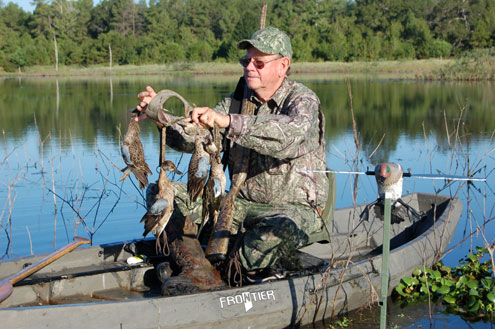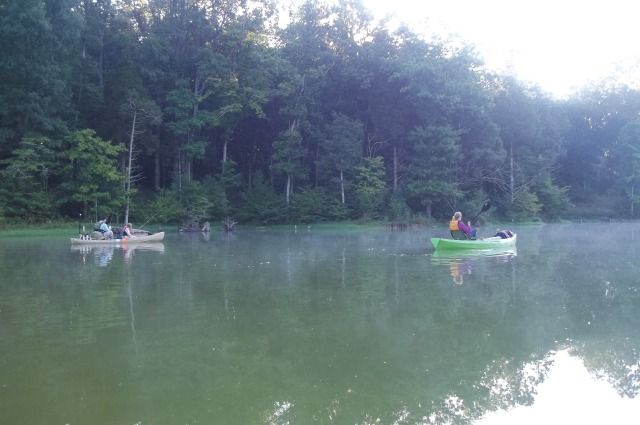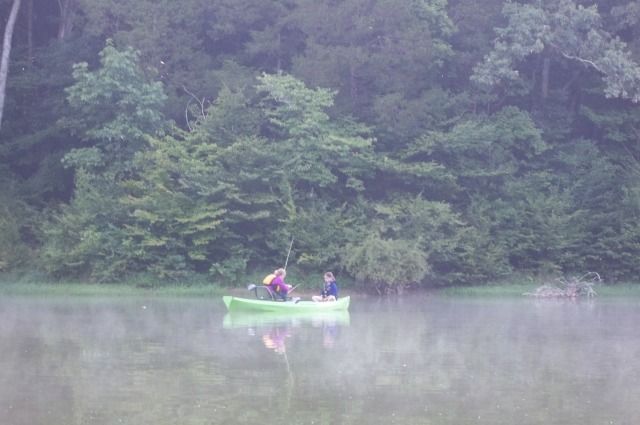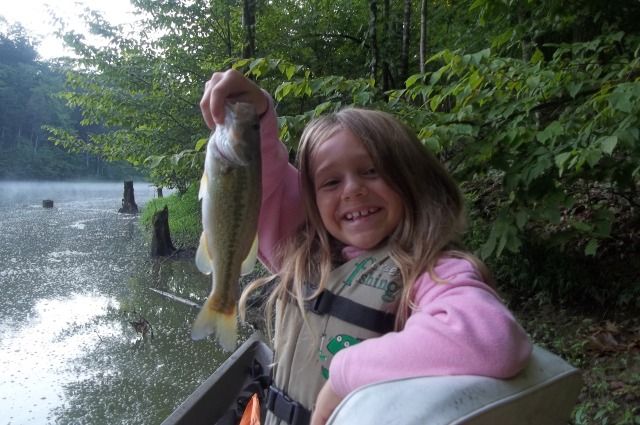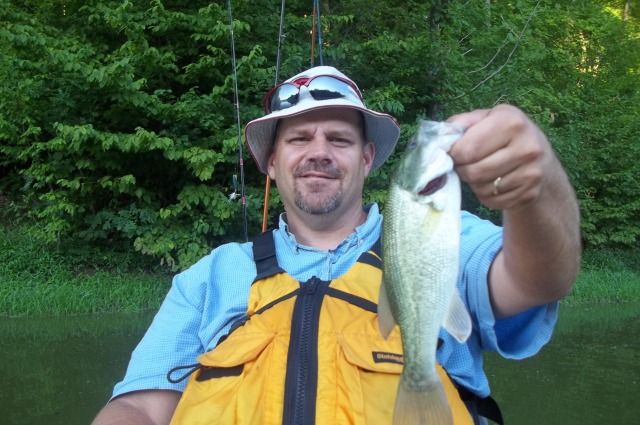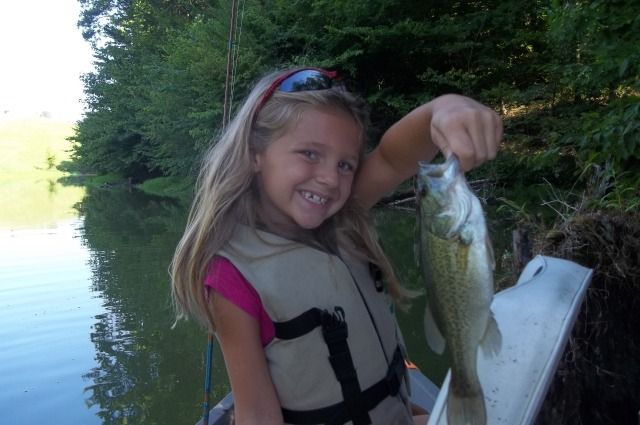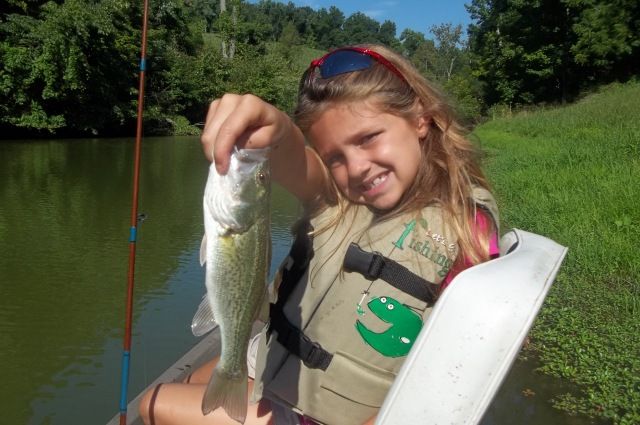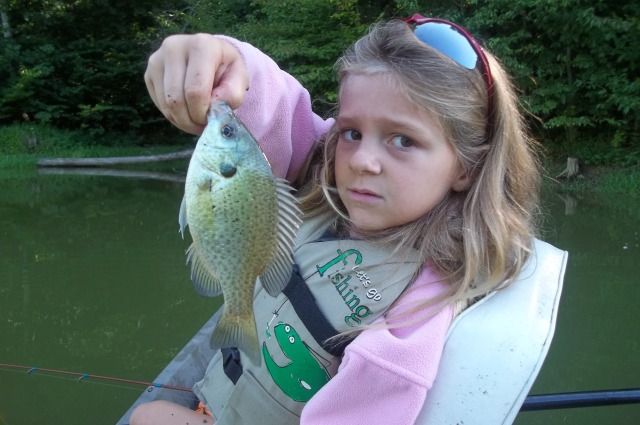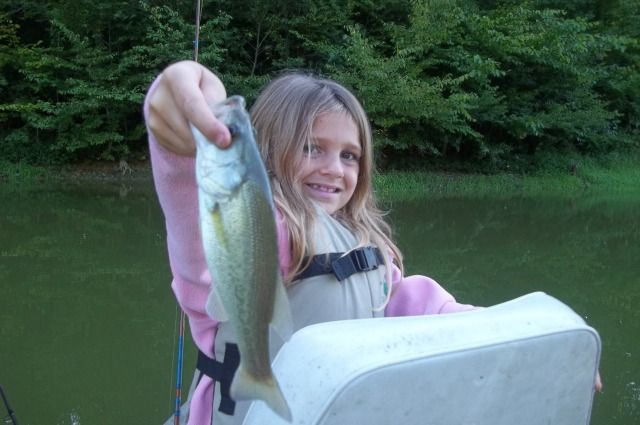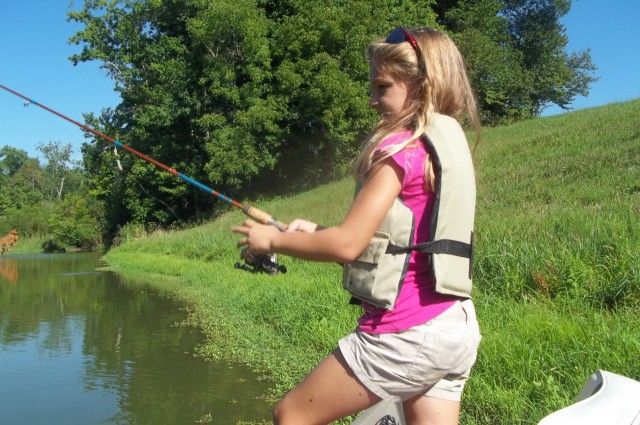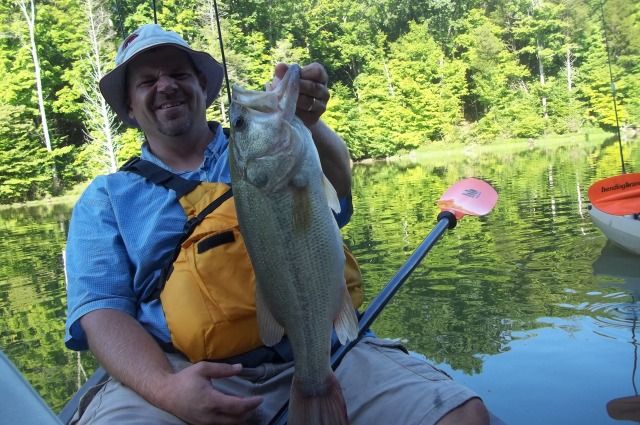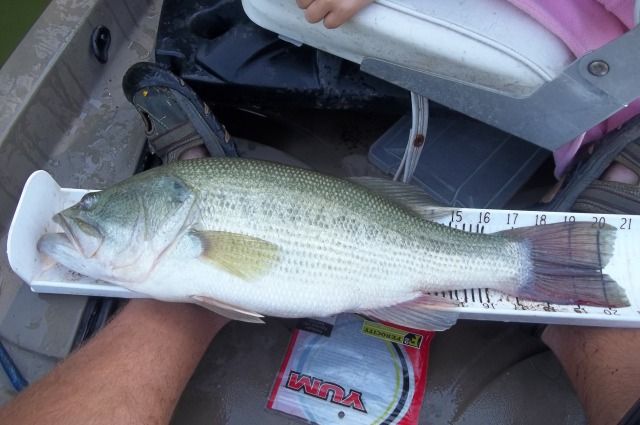Part 1
As I paddled
the old kayak through the secluded marsh near St. Simons Island, Georgia, I thought “there has to be a
better mousetrap.” It wasn’t because I
was unhappy with my Wilderness Systems Ride 135. The old yak had served me well, and at the
time, it fit the bill for what I was looking for – a stable kayak to access
fishing spots. Just ask my patient,
albeit eye rolling wife, about the ordeal leading up to purchasing my first Sit
on Top (SOT) kayak in 2008. Needless to
say, I did tons of research and thought I was purchasing the perfect kayak. What I came to realize is there isn’t a
perfect kayak, but there are some that come pretty close. For almost everyone, there are features that
are more important (than others) and can change based on what your needs
are. So began the endless hours of
searching for the perfect boat so I could join my fly fishing buds in pursuit
of our quarry. The Ride 135 was a
quality boat, but it was pretty evident – I needed a change.
Perhaps I
should start at the beginning. I am a
fly fisherman first and a kayaker second.
I have nothing against the casual or hardcore kayaker and canoeist. I enjoy getting out on the water as much as
anyone, but generally my purpose to be on the water is for reasons of the fly…
So my quest
began. To find a kayak, canoe or boat
that would fit the following criteria: stable
enough to fly fish from; light enough to easily transport; versatile enough to
allow one or two people (and maybe a dog) to comfortably use; durable enough to
withstand use (ie. abuse); high quality design and craftsmanship; and simple
design. Alas, I again need to mention the
most important feature I was searching for – the craft had to be crazy
stable. Not just a semi-secure platform
from which to occasionally stand while only in calm, current free water, but
stable enough to stand while thrashing about with a fly rod, poling, paddling
or just stretching in moving and/or rough water conditions.
The Search Begins
Pouring
through the information highway (or maybe over it), I remembered NuCanoe (www.nucanoe.com). I had seen their earlier version (NuCanoe 10
and NuCanoe 12) at a NuCanoe Dealership while on a kayak trip to Cambridge, Maryland
in July 2011. It was truly happenstance
when my two fly fishing buddies and I pulled into the shop for some local
fishing knowledge and there was a yak that looked like no other. I was intrigued at the design and the
salesman who emerged from the store quipped that the main draw was the craft’s
stability. Upon talking with him
further, he let it slip there would be a new model coming out soon and this one
was rumored to be even more stable and tout scupper holes.
I thought
back on this encounter while scouring specs on the vast assortment of kayak
models out there, including the Jackson Coosa, Hobie Mirage Pro Angler, KC
Kayaks K12, Diablo, etc. There were so
many manufacturers and models to consider.
I took a step back and had to prioritize what I was looking for, so it
came down to the main consideration – the ability to stand and fish. Not stand and wobble, mind you, but stand
while in wind, waves or current and cast (or thrash in my case) a fly rod. Of course there were many other criteria to
consider as well, including portability, weight, design and of course core qualities
I demand in any equipment I rely on which include manufacturer’s reputation,
warranty and their customer service.
As I searched
and surfed for NuCanoe, I pleasantly discovered the Maryland salesman was correct. NuCanoe was just starting to introduce their
newest model – the Frontier 12. I
started researching the craft and found it not only would meet the stability
criteria, but from the videos I watched it blew all kayak and canoe competitors
away in the stability department.
I also
discovered the second box on my criteria was approaching a check mark too. Portability wise, NuCanoe designed the
ultimate personal transport system. My
research revealed the intentional hole in the transom of the craft – don’t
worry it sits well above the waterline - served several purposes. Most importantly, it was the quick install
for their proprietary transport cart that allowed for traditional wheeling of
the craft. In addition, when one wanted
to load the yak on the top of their vehicle – mine being a Toyota 4-Runner – the solo paddler could do
it by themself. Thanks to watching another
video, all it took was to attach the cart, rotate the vessel 180 degrees to an
upside down position, and rest the Frontier’s bow on the rear roof area or
luggage rack. The solo “loader” picked
up the stern of the Frontier and slid the yak into place for tie down and
transport. What a great, and best of all,
a simple design. No more dead lifting a
kayak by yourself up onto the roof of your vehicle.
I continued
my research of the Frontier 12 and devoured as much information as I could
find. NuCanoe and You Tube offer many
videos that will help educate any prospective user and/or buyer.
I had another
lucky break when I happened to find information on Tar River Paddle Sports (www.tarriverpaddlesports.com). They are a NuCanoe Dealer in Rocky Mount, North
Carolina.
Frank Bandy is the owner/operator, and as luck would have it he was
going to be near Richmond, Virginia, participating in a boat show
premiering the Frontier 12. I arranged a
meeting with Frank and got my first look at this new design. First off, Frank is an absolute gentleman and
I appreciate the willingness he showed to educate me on the Frontier 12.
First Impressions
The boat
looked fantastic and it appeared just as it had in all the media I had
scoured. The craftsmanship, fit and
function were all there. I want to also
point out that this first model was NuCanoe’s preproduction model. Frank assured me the “new” boat would look
even better when it started rolling off the assembly line.
A list of the
NuCanoe Frontier 12’s design features include:
Gear vault with dry storage bag, internal rod chamber, universal mount docks,
multi-seat bases, cast & blast deck, 70″ freedom track, 360° mobility (with
optional swivel seats), cup holders, paddle holder, figure eight cleat, scupper
holes, talon pad, crate space and motor mount.
In addition here are the Frontier 12 specs:
Length 12’
Width 41“
Deck
Width 20”
Weight 77 lbs
Capacity 650 lbs
Draft 3–5“
Max
Power 2 HP or equivalent
One important
question to ask in regard to the Frontier 12 – is it a kayak or canoe? We could argue that question all day, but
suffice to say it’s both a kayak and canoe and some would call it a
hybrid. Personally, I refer to it as a
kayak but we all know about opinions and this article is full of my own –
please take them accordingly…
More Research
As a follow
up to meeting Frank, I called NuCanoe to get some further details. By happenstance, I talked with Blake Young. He is NuCanoe’s Director of Business
Development and his demeanor further sold me on the customer service aspect of
the company. I asked lots of questions –
likely above and beyond what the average prospective kayak owner might ever
think (or care) to ask. I was on a
mission to learn and the Frontier 12 had stoked my learning desire. Blake was happy to answer my questions and
was equally eager to expand on many “what for” curiosities related to the Frontier
12’s design, function, durability and operation. He also explained “they” were planning on
shipping the Frontier 12 to buyers starting March 1st.
Pulling the Trigger
Long story
short and understandably, I needed no more convincing and worked out all
necessary details and ordered a NuCanoe Frontier 12 in the hunter brown color –
this was probably not a huge surprise.
I decided
there would be a few items (i.e. necessities) I would add to the standard
Frontier 12. A transport cart was a
definite “have to have” – this was one key feature that sold me on easily transporting
the Frontier.
Two folding
swivel seats were in order for flexibility and maneuverability. These seats with upgraded stainless steel
swivels are secured to the included bench seats via a quick release mount. The base of the swivel slides into the mount
and can be taken off (no tools required) to facilitate a streamlined and lighter
load for transport. I have only used one
seat for my adventures (up to now at least – my wife doesn’t share the same
enthusiasm for fishing as I do) the beauty of the modular type system allows
the user to position two seats for additional passengers. The bench seat “base” secures to the freedom
track system by a sliding nut held recessed in the rail. A knob-ed bolt on each side of the bench
attaches to the sliding nut and gives flexibility for custom seat positioning.
Cannon
manufactures 275 cm paddles specifically for NuCanoe to accommodate the wide
profile of the Frontier 12. I chose the
lighter Cannon Wave Carbon paddle though the fiberglass version is only 1 ounce
heavier at 35 ounces.
Despite
taking a minimalistic approach to my fly fishing, I also opted for two fly rod
holders. I chose the Ram-Mount version
which NuCanoe distributes featuring a YakAttack MightyBolt. They secure directly to the freedom track (no
tools needed) which again adds to your ability to customize according to your
style.
A stand up handle
and anchor rope line guide kit rounded out the purchases. The standup handle connects via rope and
carabineer near the front handle and provides something to grab and pull you
into a standing position. I didn’t
really need this item and luckily it was inexpensive. As I will report later, standing in the
Frontier is a snap and I find his item would only add as something to snag a
fly line. The anchor rope line kit is a ¼”
reflective line for the anchor but includes a rubber plug w/bushing intended to
fit inside the hole in the transom and prevent the anchor rope from rubbing the
boat. The line is fine and I like the
reflective strip weaved into the line.
However, more on the rubber plug w/bushing later, but let’s suffice it
to say there is room for improvement on this small item.
My Boat
Finally, the
wait is over. I receive a phone call
from the shipping company and I go pick the new yak up. The securing and transport via my Toyota 4-Runner’s OEM roof
rack is perfect. I used a strap for each
crossbar as I did for the old kayak and the Frontier 12 rides up there like it
was made for it. No pun intended about
the “ride” but it’s important to note, I sold my Ride 135 as a prerequisite for
my new purchase. She was a good yak but
it was time to upgrade.
As I
described earlier, the transport cart made solo loading and unloading of the
Frontier 12 a breeze. I would recommend
watching the NuCanoe video which provides great instruction, guidance and tips
to employ. After three times loading and
unloading, this procedure becomes second nature. I suggest using a towel or carpet remnant at
the rear roof area just behind the roof rack to help prevent the possibility of
scratches. The NuCanoe video also shows
side loading as an option if you so desire.
On the Water
My maiden
voyage with the Frontier entailed a local lake.
There was no pomp and circumstance and I did not christen the vessel with
champagne but more importantly I was indeed impressed. Crazy stable are the first words that came to
mind. The lake conditions weren’t too
harsh but this trip was a good start to become acquainted with this new
craft. No problem standing, walking from
the seat to the bow and maneuvering around the boat. I even caught a few fish by the fly. My subsequent trip was to another lake in the
Northern Virginia Area. This one
required a long haul of the Frontier behind a gate that prevented vehicle
traffic – kayaks and canoes welcome but hauling came at your own power. The transport cart made this a breeze. Again, I was impressed with the Frontier’s
stability. I was on the water for three
hours and paddled the Frontier a long distance.
Tracking was great and the moderate wind did not have an adverse
effect. Now, I was really hankering to
get the Frontier out to where I had intended it to be – the river.
My first
river trip was to the South Fork of the Shenandoah River. This adventure turned out to be a five hour
trip and I introduced other variables and elements to test the Frontier’s ability. Once again the yak triumphed and left me even
more satisfied. I use an anchor “system”
which consisted of a 5 lb dive weight secured to the anchor rope. I rig the rope to pass through the hole in
the transom, feed through the anchor guides on the starboard side and secure to
the figure eight cleat. With this
configuration, I can drop and pull the anchor much in the same way a drift boat
utilizes its anchor system. Many fellow
kayakers realize a kayak shouldn’t be anchored sideways to the current because
the risk of capsizing increases exponentially.
By anchoring the vessel from either the bow, or in this case the stern, the
craft stays stable in a moderate current.
However, every kayaker needs to know their limitations and avoid getting
into a dangerous situation by anchoring in a current too fast for conditions or
not up to their ability. This anchoring
method opened up a whole new world of smallmouth bass fishing for me. I was able to fly fish in a slow to moderate
current while at anchor and more impressively while standing. Yes, let me repeat, I can stand in the
Frontier 12 while at anchor (and yes while drifting too) while casting a fly
rod. By fishing this method I can cover
all the parts of the river at my pace – anchor, fish a section, pull the anchor
drift down to another part and fish that area, repeat, repeat, repeat. In my old kayak, I had to fish an area while
drifting through, paddle back up, fish the same area while drifting, paddle
back up – you get the idea.
Now, wait a
minute. Remember the rubber plug
w/bushing intended to secure inside the transom hole and prevent the anchor
rope from rubbing the boat? This is the
one item that did not work as intended.
The rubber plug was too short and wide, preventing it from fitting inside
the hole in the transom. I attempted to
trim the plug but even when slimmed down it was inadequate to prevent damage to
the transom. However, I employed a
solution to correct the “issue”. I
obtained a ¾” outside diameter threaded PVC tubing and cut it slightly longer
than the transom thickness. I screwed a
plastic nut on each end (to preventing the ¾” PVC from falling out) and ran the
anchor line through the tube. The tube
helps the rope slide through (whether releasing the anchor or pulling it up)
and prevents any damage to the boat. I plan on addressing this small issue with
Blake at NuCanoe and think it would be worthwhile to offer an anchor tube as a
standard item for all Frontiers. The
“tube” must be removed to utilize the transport cart that plugs into the hole
in the transom – that’s one reason I only hand tighten the plastic nuts.
Other Design Features
The gear
vault is a standard option which includes a hatch in the front providing access
to the hull. This inside hull area
serves as the internal rod chamber and will accommodate additional gear. A dry storage bag (also included) fits on the
rim of the gear vault and the hatch “seals” the area from water intrusion. I’ve had no issues with water seeping into
this area. However, I expect running
rapids with standing waves (river) or large waves (ocean or bay) crashing over
the front could potentially allow a small amount of water to find its way
in. I have stored a gear bag inside the
hull and placed smaller items inside the dry bag as well. This storage area will not accommodate tall
bulky items. Streamlined items will fit
with no issue. In a perfect world, I
would like my backpack to fit in the vault without having to flatten out its
contents. I expect this design cannot be
changed – making the storage area larger would alter the design (and ability)
of the Frontier. Personally, I do not
care for too many hatches and storage ports in a kayak. I am definitely “less is more” when it comes
to this issue - I feel too many “holes” add just another area for water to find
its way in.
The Frontier
has seen quite a bit of action – I have spent over 24 combined hours in the
craft putting it through its paces. It
has seen use on the Shenandoah River which we talked about earlier, but since then
the James River and Potomac River also served
as test platforms. My fly fishing
buddies have commented from the seated position of their respective kayaks that
I sure am able to stand and fish easily.
Other river users have inquired about the Frontier too – often starting
out the conversation by saying they haven’t seen “anything like it” but that’s
a good thing…
The
versatility of the Frontier has allowed me to fish and “cover” the water
habitat I’ve only been able to previously enjoy from a drift boat. In the near future, I hope to get the
Frontier out in the Chesapeake Bay or other
saltwater arenas. I expect it will
handle the salt conditions with the same results – unimpeded and in stride.
Other Tidbits
I wanted to
take an opportunity to recognize and thank Luther Cifers of YakAttack (www.yakattack.com) for his help. I initially spoke with Luther via phone back
in March and he provided excellent information and ideas regarding “outfitting”
my soon to arrive NuCanoe Frontier 12.
His expertise and patience were extremely helpful in deciding what I
needed to properly outfit my new yak. Luther
was enthusiastic and came up with several alternative solutions to help me sort
through available equipment and innovative mounting options. After talking through many solutions, I knew
the VisiCarbon Pro light (w/Mighty Mount Ready mounting option) and a Mighty
Mount were the appropriate choices to get started. As I noted above, the NuCanoe Frontier 12’s track
system accepts the Ram-Mount Fly Rod holder w/Ram Ball. Additionally, the MightyBolt found on the
bottom of the VisiCarbon Pro also fits the freedom track. Due to the potential for increased lateral
force with the VisiCarbon Pro, I decide a hard mount of the Mighty Mount was in
order. I installed the Might Mount in
the rear deck of the Frontier 12 in the mount dock location – port side behind
the rear seat position. I utilized one
of the new vacuum plates to install this Mighty Mount. There is no rear access hatch, and by using
the rigging bullet “method” to help with installation it was an easy job even
with the hard to reach back area. The
Frontier’s front hatch accesses the inside of the hull so the vacuum plate
w/rigging bullet is the “go to” method to facilitate this install.
Conversations
with both Blake Young and Luther Cifers confirm NuCanoe and YakAttack have an
excellent and ongoing working relationship.
The progressive nature of both companies and their products will only
help kayakers to better customize their vessels.
Final Thoughts
To sum it up
– I couldn’t have picked a better solution for my needs – a well built and put
together kayak with the added accessories are not only practical but simple,
durable and quite simply, they work.
I hope to do
a follow up article to keep everyone updated on the progress of the NuCanoe
Frontier 12 endeavor. So far the NuCanoe
Frontier 12 is not only a winner but it’s a home run. The Frontier is a stable, well made and
durable vessel which is easy to stand and fly fish from. Sure, there are other kayaks out there that
will get the job done but the beauty of the NuCanoe Frontier 12 hinges on
getting it done right.
Thanks again
to Blake and NuCanoe for their help, support and innovative ideas.
About the Author
David
Cushman
is one of the newer members of the Royalty Fly Tyer team with Umpqua Feather
Merchants. His newest fly pattern, the
“Great Lakes Goby” will debut later in 2012 and is intended to target
smallmouth bass in lakes, rivers and streams.


.jpg)
.jpg)








